Shane Gero
Automatic Detection and Annotation of Sperm Whale Codas
Jul 24, 2024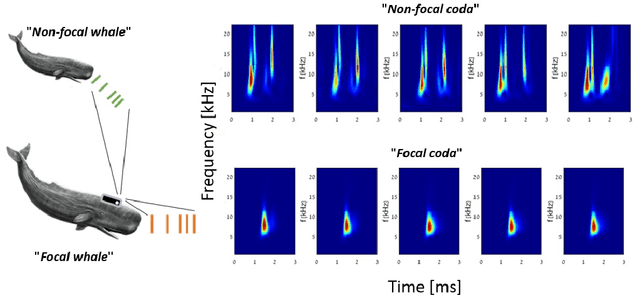

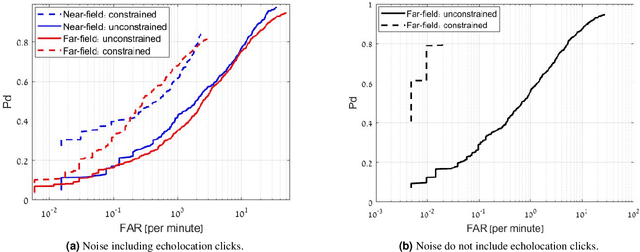
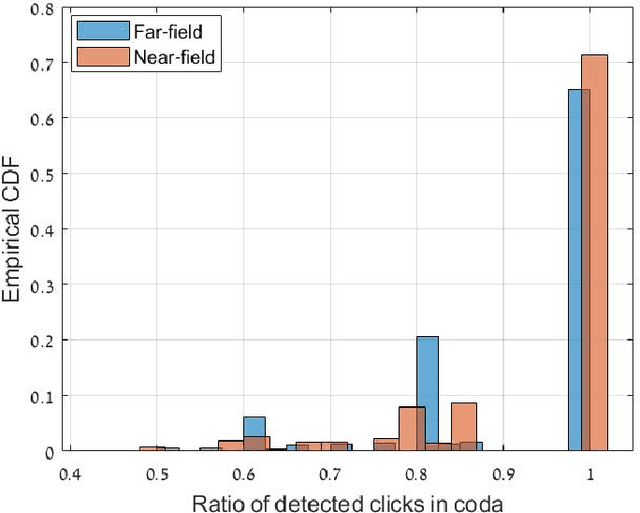
Abstract:A key technology in sperm whale (Physeter macrocephalus) monitoring is the identification of sperm whale communication signals, known as codas. In this paper we present the first automatic coda detector and annotator. The main innovation in our detector is graph-based clustering, which utilizes the expected similarity between the clicks that make up the coda. Results show detection and accurate annotation at low signal-to-noise ratios, separation between codas and echolocation clicks, and discrimination between codas from simultaneously emitting whales. Using this automatic annotator, insights into the characterization of sperm whale communication are presented. The results include new types of coda signals, analyzes of the distribution of coda types among different whales and for different years, and evidence for synchronization between communicating whales in terms of coda type and coda transmission time. These results indicate a high degree of complexity in the communication system of this cetacean species. To ensure traceability, we share the implementation code of our coda detector.
Approaching an unknown communication system by latent space exploration and causal inference
Mar 20, 2023



Abstract:This paper proposes a methodology for discovering meaningful properties in data by exploring the latent space of unsupervised deep generative models. We combine manipulation of individual latent variables to extreme values outside the training range with methods inspired by causal inference into an approach we call causal disentanglement with extreme values (CDEV) and show that this approach yields insights for model interpretability. Using this technique, we can infer what properties of unknown data the model encodes as meaningful. We apply the methodology to test what is meaningful in the communication system of sperm whales, one of the most intriguing and understudied animal communication systems. We train a network that has been shown to learn meaningful representations of speech and test whether we can leverage such unsupervised learning to decipher the properties of another vocal communication system for which we have no ground truth. The proposed technique suggests that sperm whales encode information using the number of clicks in a sequence, the regularity of their timing, and audio properties such as the spectral mean and the acoustic regularity of the sequences. Some of these findings are consistent with existing hypotheses, while others are proposed for the first time. We also argue that our models uncover rules that govern the structure of communication units in the sperm whale communication system and apply them while generating innovative data not shown during training. This paper suggests that an interpretation of the outputs of deep neural networks with causal methodology can be a viable strategy for approaching data about which little is known and presents another case of how deep learning can limit the hypothesis space. Finally, the proposed approach combining latent space manipulation and causal inference can be extended to other architectures and arbitrary datasets.
Cetacean Translation Initiative: a roadmap to deciphering the communication of sperm whales
Apr 17, 2021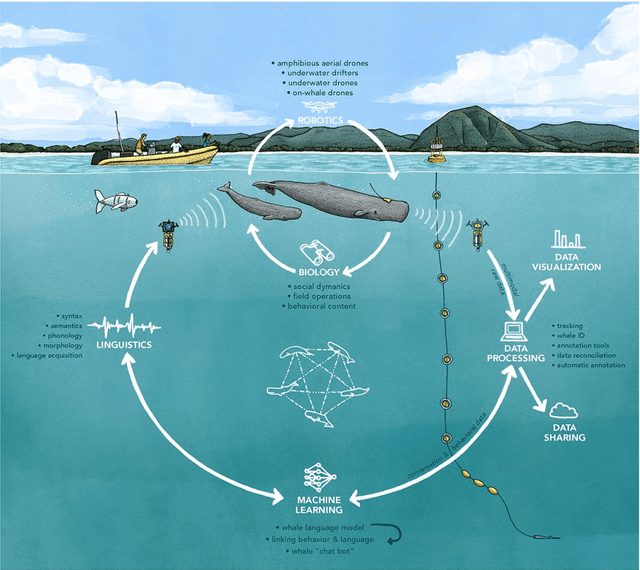
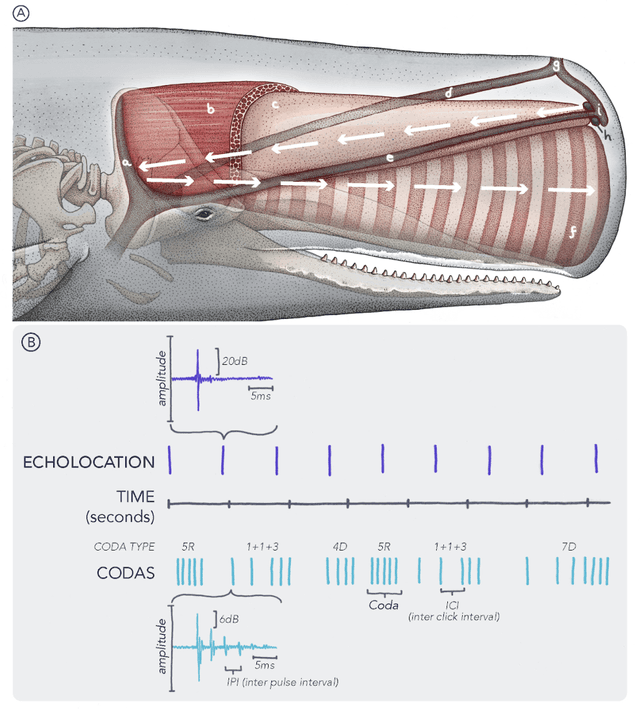
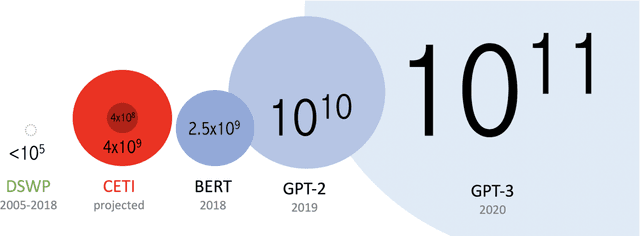
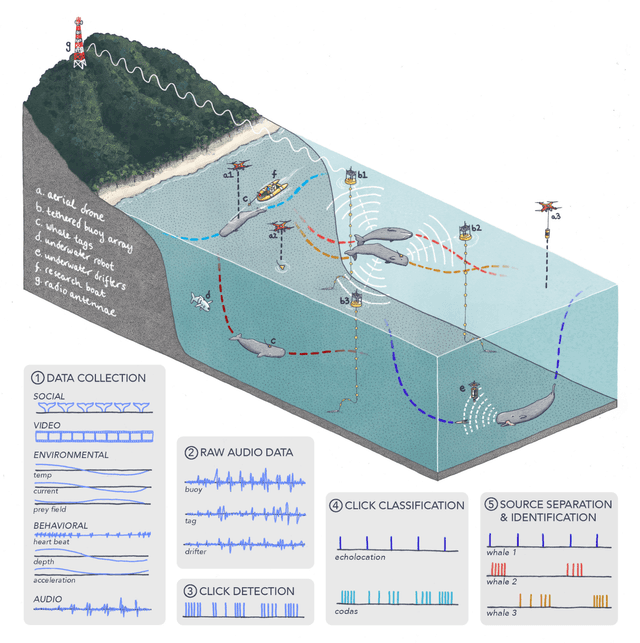
Abstract:The past decade has witnessed a groundbreaking rise of machine learning for human language analysis, with current methods capable of automatically accurately recovering various aspects of syntax and semantics - including sentence structure and grounded word meaning - from large data collections. Recent research showed the promise of such tools for analyzing acoustic communication in nonhuman species. We posit that machine learning will be the cornerstone of future collection, processing, and analysis of multimodal streams of data in animal communication studies, including bioacoustic, behavioral, biological, and environmental data. Cetaceans are unique non-human model species as they possess sophisticated acoustic communications, but utilize a very different encoding system that evolved in an aquatic rather than terrestrial medium. Sperm whales, in particular, with their highly-developed neuroanatomical features, cognitive abilities, social structures, and discrete click-based encoding make for an excellent starting point for advanced machine learning tools that can be applied to other animals in the future. This paper details a roadmap toward this goal based on currently existing technology and multidisciplinary scientific community effort. We outline the key elements required for the collection and processing of massive bioacoustic data of sperm whales, detecting their basic communication units and language-like higher-level structures, and validating these models through interactive playback experiments. The technological capabilities developed by such an undertaking are likely to yield cross-applications and advancements in broader communities investigating non-human communication and animal behavioral research.
 Add to Chrome
Add to Chrome Add to Firefox
Add to Firefox Add to Edge
Add to Edge